In the northern reaches of Kenya, where dry earth meets endless sky, live the Samburu—a semi-nomadic people deeply attuned to the rhythms of the land and the animals they share it with. Closely related to the Maasai and speakers of the Maa language, the Samburu follow the seasons in search of fresh pasture. Cattle are not merely sustenance—they are sacred beings, central to Samburu spirituality and survival. When a boy is born, a drop of cow’s milk is placed on his tongue to bond him to the herd before even his mother.
Within Samburu life, each member of the community has a role. Young men—warriors—herd cattle, while the rest of the family tend to goats and sheep. Women, or mamas, also care for children, while keeping alive traditional crafts like gourd carving—decorative containers for milk, a sacred sustenance—and beading.
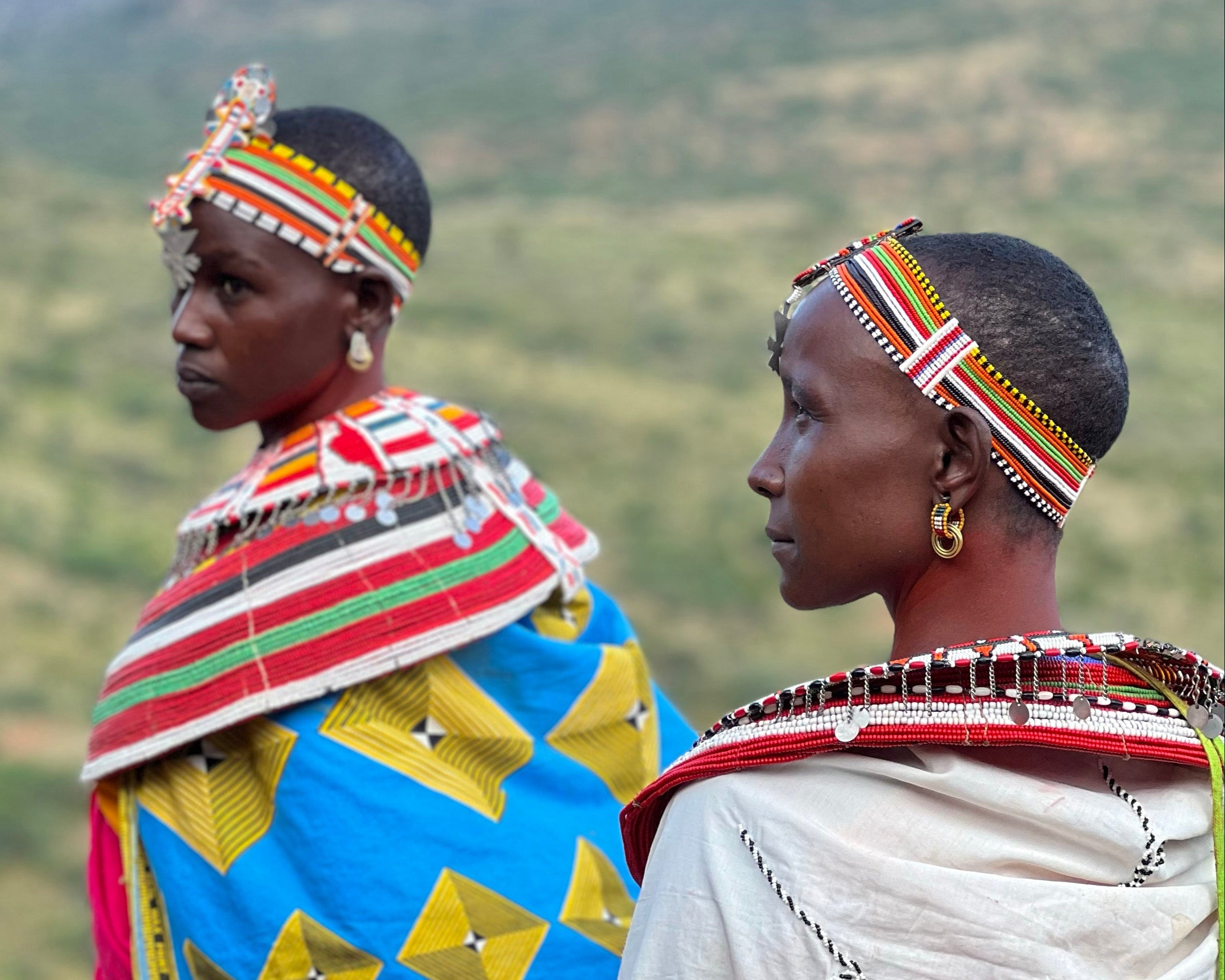

For the Samburu, beads are more than ornament—they are a living language. Sometimes called the butterfly people for their layered, vibrant adornment, Samburu men, women, and children all wear intricate collars, earrings, headdresses, and belts. Each color and pattern tells a story, a kind of diary of life. Beadwork marks life’s great transitions and plays a central role in ceremonies and rituals: coming of age, a boy becoming a warrior, a girl getting married, a sacred bull slaughtered on a wedding day, a woman giving birth. Each stage is a gateway, and the beads act as guides. They are objects of power—the spirit of the Samburu made visible.
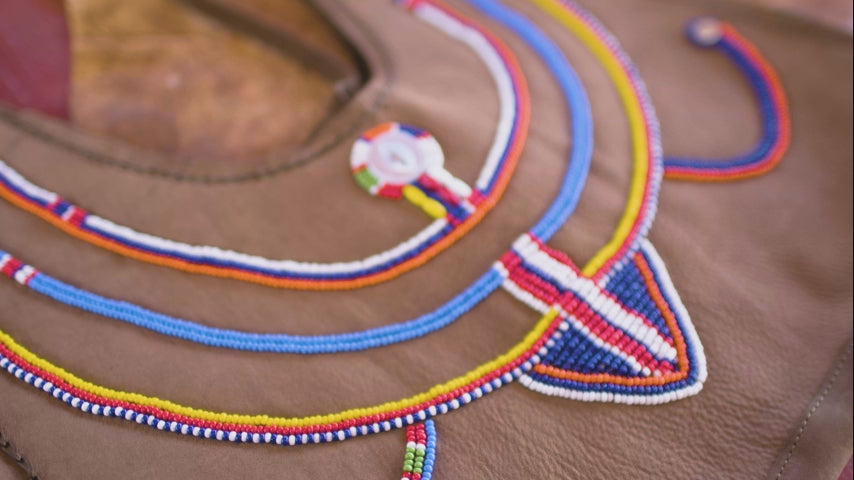

Beading is also a map: colors and patterns speak of age, wealth, marriage, and lineage. Beads mirror the seasons and the passage of time, the age sets that define Samburu identity. A girl wears red beads, until as a woman she gives them away to her daughters, and more blue and green beads emerge—wisdom earned over time. Every few years, new colors and patterns become prevalent, a visual rhythm that distinguishes generations.
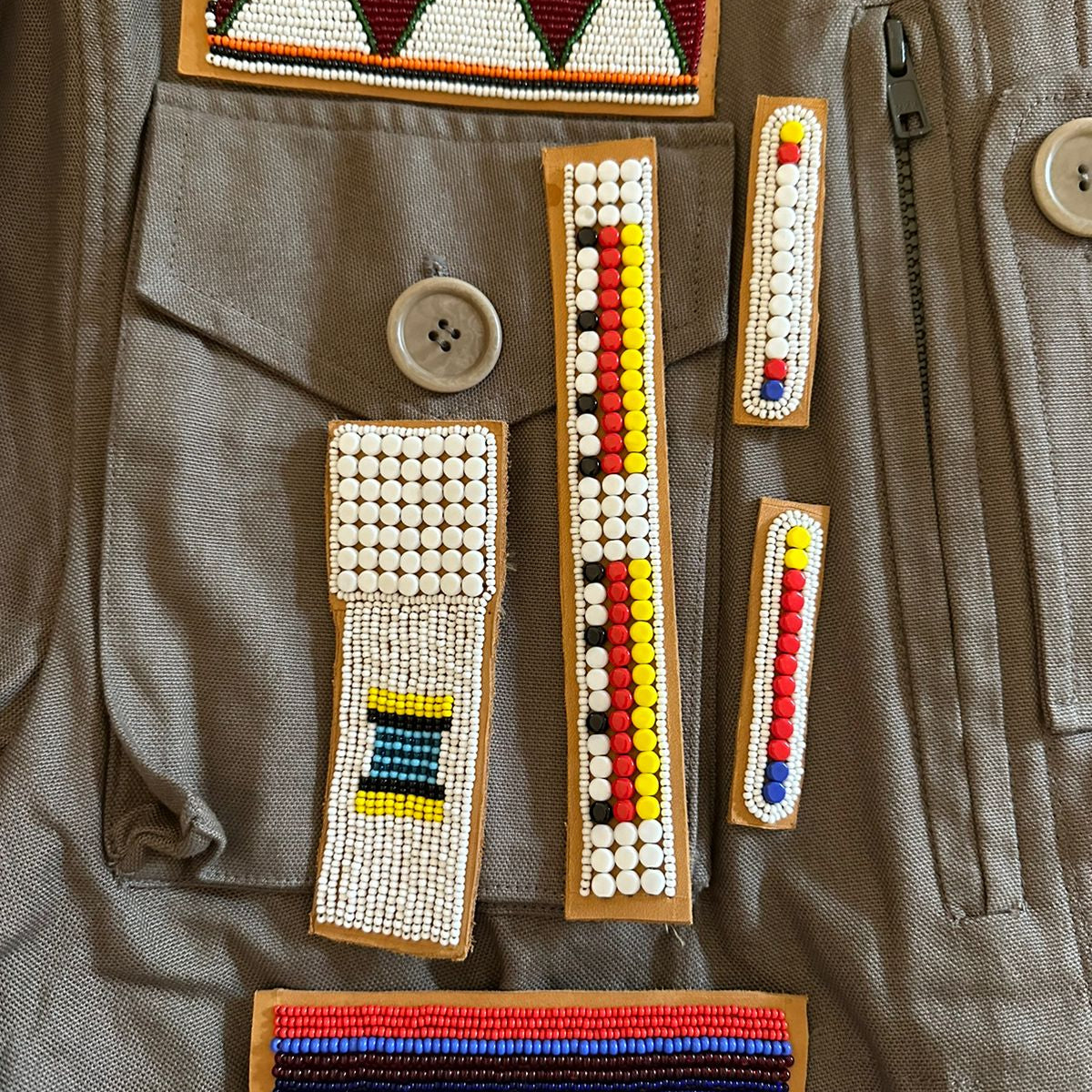


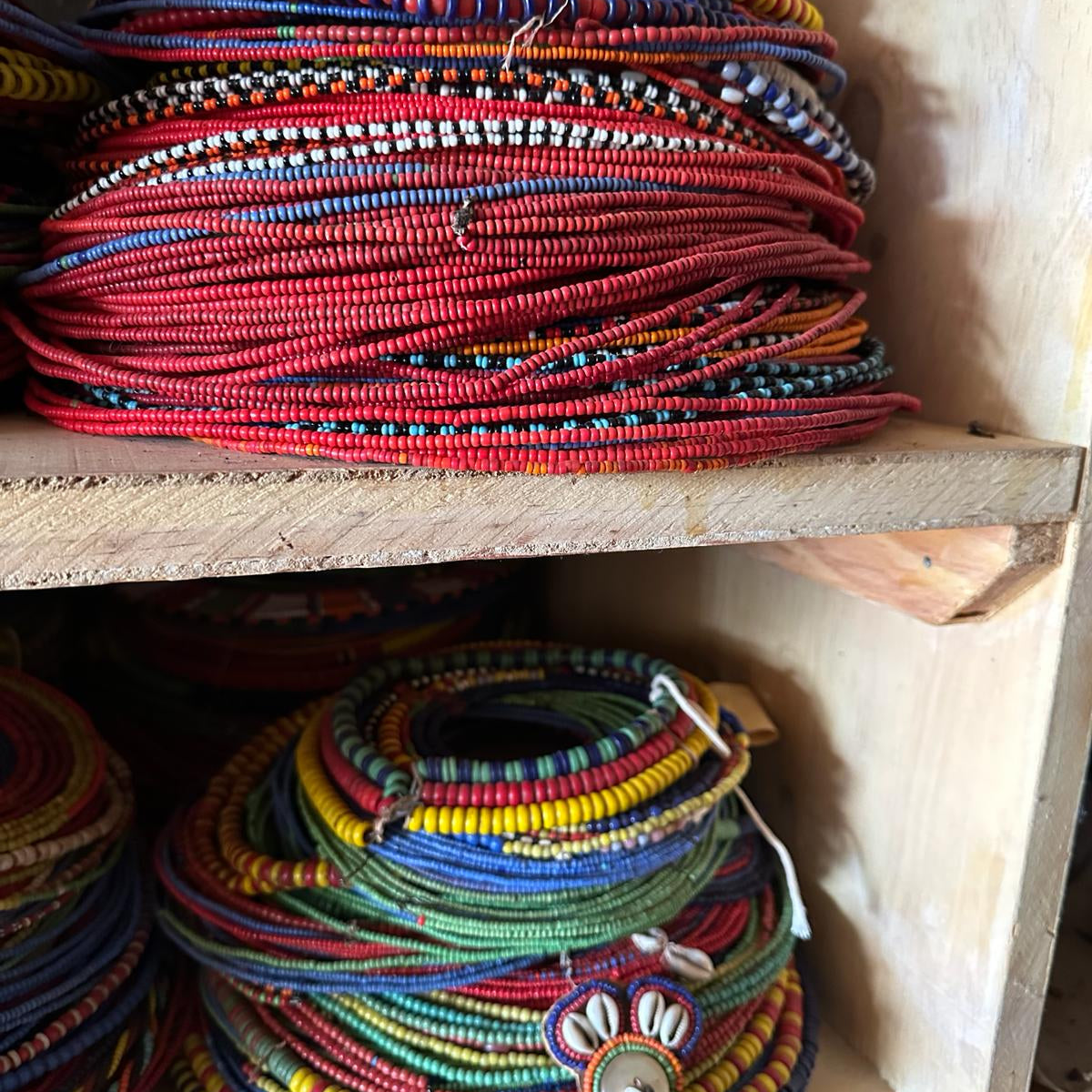
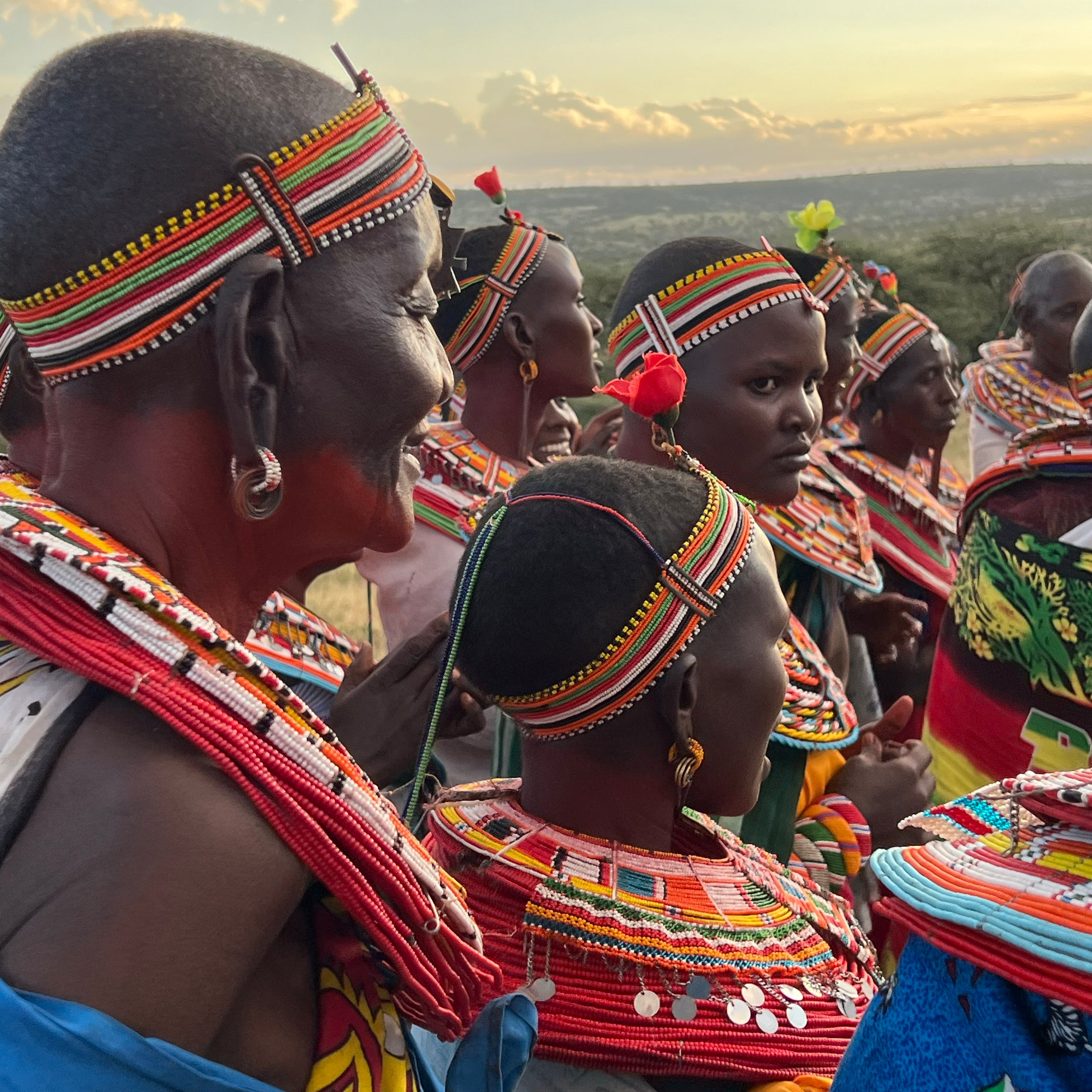

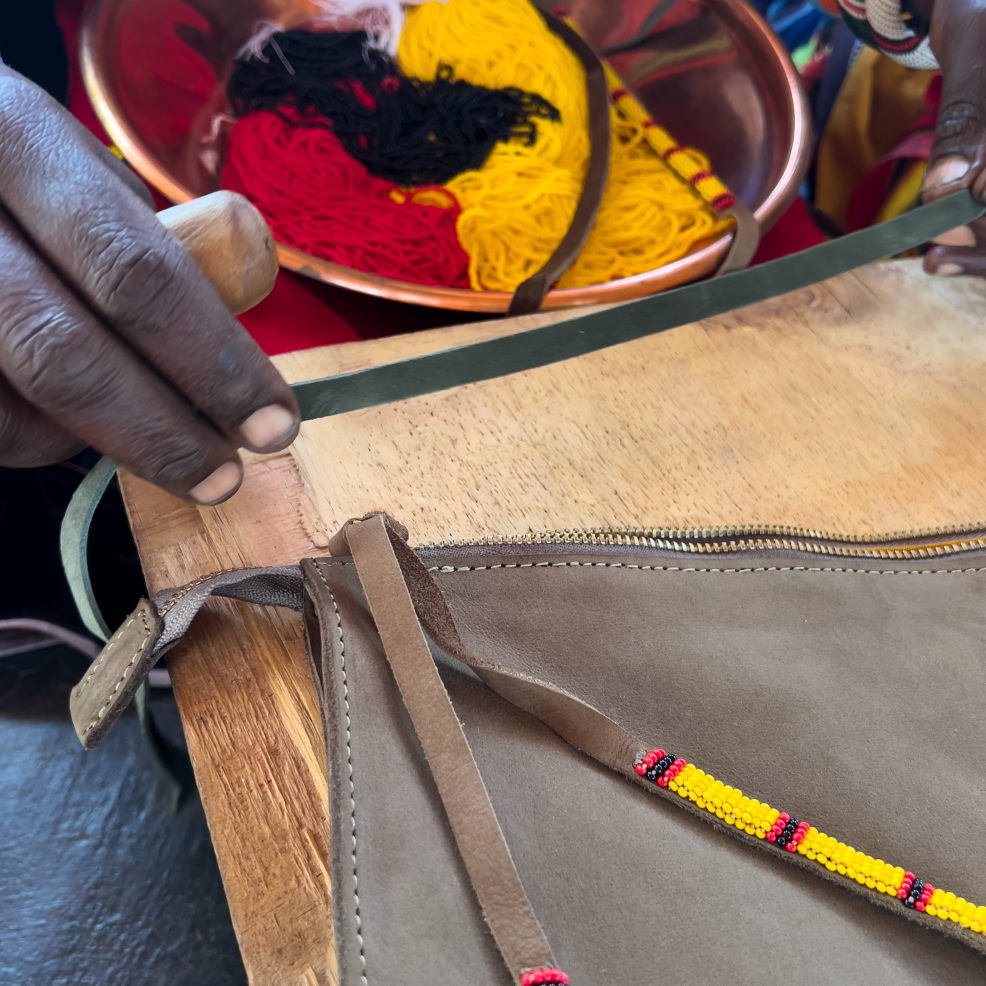

Beading skills are passed from generation to generation, beginning very early in life. Babies teethe on bracelets instead of toys; beads jingle from the ankles of mischievous little boys to keep them from getting lost. As soon as they can hold a needle, children mimic their mothers, threading beads into patterns—learning not only technique, but the rhythms of identity and place. In this way, beading becomes a way of remembering: a practice that binds person to place and time. The beads are like living jewelry—not just objects of beauty, but totems that connect the Samburu to their sacred rituals, their land, and the cycles of the Earth itself. They are never truly finished: necklaces are added to, buttons sewn on, pieces rearranged like a story still being written.
We are honored to partner with the Samburu Trust in Northern Kenya, to support the preservation of this extraordinary way of life. What began in the wake of a devastating drought more than 25 years ago has become a lifeline for thousands of women. Through the Trust’s beading project, they earn livelihoods, support their families, educate their children, access healthcare, empower girls, and sustain the sacred art passed down through generations.
All profits from the sale of our Kenya-made products directly support Samburu Trust's efforts to restore and safeguard ancient elephant migration highways and protect wildlife through the anti-poaching initiatives of the Sheldrick Wildlife Trust.






















